Hmm... so
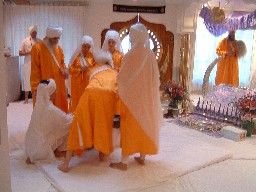 what DOES AMRIT offer?
what DOES AMRIT offer?Surely we cannot be so naive as to assume that just because AMRIT gives you guidelines, that AMRIT does not have something to offer. If we say this, we would be the most ignorant fools on the earth. There is a reality we must embrace - that AMRIT is a wonderful gift, a wonderful change of lifestyle, and a very drastic and valuable opportunity.
Let us look at this example, which is very minor compared to being blessed with AMRIT: Somebody offers you the position of Captain on the Detroit Red Wings hockey team. You would be simply astounded. But uh oh, wait a second - what a big responsibility that is! You will have to get training, become professional, be a good role model, and be leadership material. You will have to accept accountability, big expectations from people. you will have to follow certain guidelines - you will need to wear a certain uniform and act in a certain way.
Pretty limiting? Ask the captain of Detroit Red Wings, Steve Yzerman, if he loves his job. Of course he does! Would he trade it for anything? Definitely not! Does it have restrictions? For sure! Do the advantages of the job beat the restrictions? No competition - there are tons of advantages and the disadvantages just seem like reasonable parts of the game.
 What game are we playing here?
What game are we playing here? ms514 from Sikhsangat.com says: Sikhism, AMRIT and Salvation: Conside
 r if you will that Sachkhand is a foreign country. You will need a passport to get in and a visa stamp. AMRIT is that passport and the visa stamp is the Almighty's Kirpa (blessing). In which case Dharam Raaj is immigration. By taking AMRIT, you are going to your Guru and saying that "Your teachings are the best, so I promise to lead the life in the way that you have set for me, with your and Waheguroo's blessings"
r if you will that Sachkhand is a foreign country. You will need a passport to get in and a visa stamp. AMRIT is that passport and the visa stamp is the Almighty's Kirpa (blessing). In which case Dharam Raaj is immigration. By taking AMRIT, you are going to your Guru and saying that "Your teachings are the best, so I promise to lead the life in the way that you have set for me, with your and Waheguroo's blessings"Khalsa4ever from Sikhsangat.com says: If you can't take the step to make that kind of promise to your Guru, you won't be able to make it all the way spiritually.
Balwinder Kaur from Sikhsangat.com says: 5K's aren't mentioned in Sri Guru Granth Sahib Ji because it was our Dasam Pita who initiated this order - and the bachan(instructions) of our Dasam pita was not included in the final copy of SGGS jee when it was compiled in the 1700s at Damdama Sahib. We wear the 5K's because it's a Hukam from Guru Sahib & as His children, we should comply with His instructions
mann_kaum_layee_qurbaan from sikhsangat.com says: How many teachers does a person have throughout their education? I have had over 25 to earn a degree. this was just to get a degree in worldy knowledge about one field of study.
 It took ten Guru Sahibs to mould a cowardly people into Sant Sipahis. The first nine Gurus armed our minds with Gurbani or God's word. Guru Gobind Singh Ji armed us physically. Why didn't the first nine Gurus take AMRIT?
It took ten Guru Sahibs to mould a cowardly people into Sant Sipahis. The first nine Gurus armed our minds with Gurbani or God's word. Guru Gobind Singh Ji armed us physically. Why didn't the first nine Gurus take AMRIT?What is AMRIT? Is it a time to get a sword? AMRIT is a Sikh’s wedding to Guru Sahib. A commitment to keep the Khalsa Rehit. Guru Gobind Singh Ji says that for him Rehit is more dear than a Sikh. You can't give people without Rehit or discipline swords or weapons. One becomes a Saint Soldier or Sant Sipahi after committing to the Rehit so one is truly a Sant Sipahi and not some fanatic with a weapon.
Guru Gobind Singh Ji did not take AMRIT to become a Sikh, Guru Sahib took AMRIT to show that the Khalsa was Guru' s Sroop or the Guru's image. Basically like the student is now the master. This is why we say Guru’s Panth Khalsa.
It took ten Gurus to make an Army of God. It takes over 35 teachers to earn a degree in some useless major. You do the math …

AMRIT is a physical concept to show one's commitment to the Khalsa Rehit or discipline. The real AMRIT in Sikhi one strives for is the AMRIT of Naam. This AMRIT was in all the Gurus and also the Bhagats such as Bhagat Ravidas Ji, Bhagat Naam Dev Ji, Skeih Farid Sahib, Bhagat Kabir Ji, and many more. Naam is above all. To say why didn't out Gurus take AMRIT is like saying that the gurus lacked a spiritual Rehit.
Reading this article it could be overwhelming. For many taking AMRIT is overwhelming. It is a huge responsibility, and for some it maybe the sole factor as to why they do not take AMRIT. To the western world standards, AMRIT does have restrictions. But the advantages of having AMRIT out number the restrictions in great number. Many of us have to realize that this body we have, does not belong to us. It belongs to the GURU. We have borrowed this body for the purposes of living on this earth. One day, we are going to have to give it back to the GURU. How can we return a body back that has been torn apart by the 5 vices? We can’t. We need to respect our body. And Guru Sahib has given us the tools to do that. Be part of the ARMY OF GOD – Take AMRIT – you will be glad you did!
 What team are we on? Akaal Purakh Kee Fauj.
What team are we on? Akaal Purakh Kee Fauj.
This is our team...
Defence: YOU
Who are our captains?
Sri Guru Gobind Singh Ji and Mata Sahib Kaur Ji.
Who is our coach?
Sri Guru Granth Sahib Ji.
Who is our goalie? Our own REHIT.
Who are our opponents?
Kaam, krodh, lobh, moh, ahankaar, jhoot, nindaa, vair, virod
And their coach is Maayaa.
If we want to play we know the rules. We know the risks. But our skates are like ice, and our ice is like the sharp blades of skates. This path is sharper than a sword's edge and thinner than a hair.
This skating arena is the world. There is no overtime in this game. Our Sangat is on our team. Our Rehit Maryada are the referees.
All the devis, devtas, sur, nar, mun, jan - THEY WANT TO PLAY THE GAME - but they are our fans. They cheer us on, we can win, and the rewards are endless: theh anek roop nau nav nidh this daa anth naa jaaee paaeiaa, man jeetay jug jeet, jis no bakshay sifat salaahu naanak paatshaahee paathsaahu...
The rewards are endless. All the worldly bliss, but more importantly the true love of the Guru Ji’s feet... and the internal bliss of immortal nectar of the Guru Ji's bani. We can obtain this if we win the game. BUT there is a lot at stake. We must remain dedicated. We should not have duality. We should not lose faith in our team. And we should never waver from the high standards of our team. Or else we will lose in the end.
This is Akaal Purakh's Game

Article: Hmm... so what DOES AMRIT offer? SaadhRayn Kaur; Sangat Participation: www.Sikhsangat.com; Pictures: From Various Sikh sites on Web.

Children of Waheguru
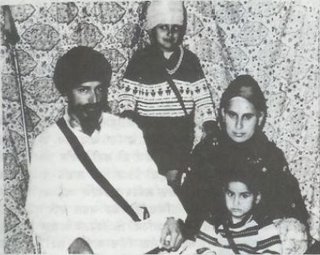 This is a real life story about a brave family that scarficed their lives for the Khalsa Panth: Bhai Mohar Singh of the Damdami Taksal and his wife Bibi Pritam Kaur and their daughters 8 year old Satnam Kaur, 6 year old Vaheguru Kaur. They sacrificed their lives defending Sri Harmandir Sahib in June 1984. Bhai Sahib’s was no ordinary family they had converted into Sikhi and were regarded as Sant Jarnail Singh Khalsa Bhindranwale’s closest aides. When the army attacked Sri Harmandir Sahib they held their positions until the tanks came into the parakarma (walk way around Sri Harmandir Sahib).
This is a real life story about a brave family that scarficed their lives for the Khalsa Panth: Bhai Mohar Singh of the Damdami Taksal and his wife Bibi Pritam Kaur and their daughters 8 year old Satnam Kaur, 6 year old Vaheguru Kaur. They sacrificed their lives defending Sri Harmandir Sahib in June 1984. Bhai Sahib’s was no ordinary family they had converted into Sikhi and were regarded as Sant Jarnail Singh Khalsa Bhindranwale’s closest aides. When the army attacked Sri Harmandir Sahib they held their positions until the tanks came into the parakarma (walk way around Sri Harmandir Sahib).Khalsa Ji, today, we bow our heads to this great family who scarficed their lives for our Khalsa Panth. Dhan Dhan Guru Ke Sikh. Bhai Mohar Singh, Bibi Pritam Kaur, Bhenji Satnam Kaur, and Bhenji Vaheguru Kaur will be honoured for their mutual acts of bravery, in essence, for saving the Khalsa Panth. They will be remembered in our ardass eternally.
When my father came to awaken me
At first I was annoyed
Soon it changed to fight
To be awakened
For I had to fight for my family’s dream
I led a carefree life
At least until now,
Now my life has been occupied,
By the enemy
It’s hard to explain how
But deep inside I somehow knew
My pain would be over
We were told to guard our home
But then without warning
Some men came to take us away
My mother did not let them
As she fought with all of her strength
That sooner or later
We were going to die
And so it was on June 6th
We died there together
My family and I

We did our Kirtan
We were loved
We were ripped from the arms of our
parents and thrown into the fire
We were nothing more than children
We had a future
We were the face the of this Panth
We had dreams too, then we had no hope
We were taken away in the dead of night
No air to breathe
We are separated from the world to be no more.
From the ashes, hear our plea
For we were children whose dreams and lives were stolen away!
But for the children whose lives were taken away
We shall fight to the very end
And make it clear
We are the next generation
May I recite Guru Ji's Bani?
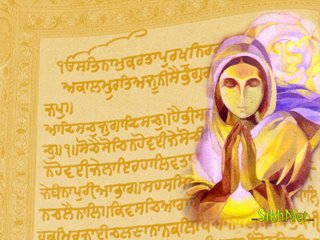 "Sikh women today are not only aware of their rights, roles and rigors, but they are also scripting narratives of their trials and tribulations in a multicultural setting. Their involvement in religious matters is germane to their essence and a source of inspiration for their families and friends. They are out to change the attitude of world in general and Sikhs in particular. They are leading strong movements against race, class and gender discrimination in educational institutions and at work places. Their encounter with the rest of the world has strengthened their identity as Sikhs and they are further exploring scriptures and history for supporting their assertive representation..." - Panthic Weekly
"Sikh women today are not only aware of their rights, roles and rigors, but they are also scripting narratives of their trials and tribulations in a multicultural setting. Their involvement in religious matters is germane to their essence and a source of inspiration for their families and friends. They are out to change the attitude of world in general and Sikhs in particular. They are leading strong movements against race, class and gender discrimination in educational institutions and at work places. Their encounter with the rest of the world has strengthened their identity as Sikhs and they are further exploring scriptures and history for supporting their assertive representation..." - Panthic WeeklyMany young Sikh women look forward in doing Seva at the Gurdwara. Many take part in serving langar, doing kirtan, or teaching Gurbani. Their involvement in Seva at the Gurdwara has become a source of inspiration for their families, friends, and other Sikh women. Although, many women have stepped up to the plate and started to break down these barriers for the next generation of Sikh women, there is still a lack of women participating in reciting Guru Ji’s Bani from Sri Guru Granth Sahib Ji. A question that many of us hear, especially from Sikh Women, “Can I recite Bani from the Sri Guru Granth Sahib Ji within the Gurdwara/Sangat?”
“Guru Nanak Dev hasn’t left any iota of doubt about the significance of women in society. In fact distancing women from the center is undesirable in Sikh society. They aren’t only natural and nurturing influence on Sikh seminaries, but also an integral part of the spiritual growth of the Sikh society.” - Panthic Weekly
According to Guru Ji’s teaching and Sikhi beliefs, the answer is, yes, Sikh men and Sikh women are allowed to recite Bani from Sri Guru Granth Sahib Ji. The following article is intended to strengthen the courage of young Sikh women to participate in reciting of Bani within the Gurdwara/Sangat.
Bibi Amro ji
Bibi Amro ji was the daughter of Sri Guru Angad Dev ji, the Second Guru. She was born in 1532 in the village
 of Khadur Sahib, District Amritsar. She received her early education and training directly from her parents Sri Guru Angad Dev ji and Mata Khivi ji.
of Khadur Sahib, District Amritsar. She received her early education and training directly from her parents Sri Guru Angad Dev ji and Mata Khivi ji.Sri Guru Angad spent a lot of time with his children. He taught them the Gurmukhi script that he had revised and simplified which is used in Sri Guru Granth Sahib Ji. When she came of age she was married to Bhai Jasoo on of Manak Chand of Basarke village.
As was the custom of the day she was sent to live with her husband’s family. Her father encouraged her to continue doing Kirtan and to preach Sikhism to all that she came in contact with. There lived a very devout Vaishanavite Hindu named Amar Das, who was Bibi Amro’s uncle. One day he heard Bibi Amro who was recently married to his nephew singing the hymns of Sri Guru Nanak Dev Ji. It has been noted by some scholoars that Bibi Amro was reciting:
maaroo mehalaa 1 ghar 1
Maaroo, First Mehl, First House:
karanee kaagadh man masavaanee buraa bhalaa dhue laekh peae
Actions are the paper, and the mind is the ink; good and bad are both recorded upon it.
jio jio kirath chalaaeae thio chaleeai tho gun naahee a(n)th harae 1
As their past actions drive them, so are mortals driven. There is no end to Your Glorious Virtues, Lord. 1
chith chaethas kee nehee baavariaa
Why do you not keep Him in your consciousness, you mad man?
har bisarath thaerae gun galiaa 1 rehaao
Forgetting the Lord, your own virtues shall rot away. 1Pause
jaalee rain jaal dhin hooaa jaethee gharree faahee thaethee
The night is a net, and the day is a net; there are as many traps as there are moments.
ras ras chog chugehi nith faasehi shhoottas moorrae kavan gunee 2
With relish and delight, you continually bite at the bait; you are trapped, you fool - how will you ever escape? 2
kaaeiaa aaran man vich lohaa pa(n)ch agan thith laag rehee
The body is a furnace, and the mind is the iron within it; the five fires are heating it.
koeilae paap parrae this oopar man jaliaa sa(n)nhee chi(n)th bhee 3
Sin is the charcoal placed upon it, which burns the mind; the tongs are anxiety and worry. 3
bhaeiaa manoor ka(n)chan fir hovai jae gur milai thinaehaa
What was turned to slag is again transformed into gold, if one meets with the Guru.
eaek naam a(n)mrith ouhu dhaevai tho naanak thrisattas dhaehaa 43
He blesses the mortal with the Ambrosial Name of the One Lord, and then, O Nanak, the body is held steady. 43
Amar Das started to listen to them every day until he was enchanted by them. Bibi Amro told Amar Das about the mission of Sri Guru Nanak Dev Ji and promised to introduce him to her father Sri Guru Angad Dev Ji.
It was she who first introduced him to the teachings of Sikhism. As his interest grew it was she who sent him to her father to learn more about these teachings.
Sri Guru Amar Das Ji was so deeply influenced by Sri Guru Angad Dev Ji that he became a devout Sikh, so much that Sri Guru Angad Dev ji announced him as his Successor.
"...Thus Sri Guru Amar Das ji, the third Guru got to his destiny of becoming a Guru through Bibi Amro ji..."
Years later when Sri Guru Amar Das ji gave structure to the Sikh Nation and organised his preachers into 22 teaching districts he put Bibi Amro ji in-charge of on of these districts called Manji. What Manji meant was that a person who was leading a Kirtan to be sit on the Manji while whole Sangat in front of Him.
The person occupying Manji was the Sikh preacher appointed by Sri Guru Amar Das Ji. This appointment can best be compared to the position of Bishop in the Christian Church today. It was an administrative position, with full responsibility for the equality and content of the preaching’s. She also would have the responsibility of collecting revenues and making decisions for the welfare of her diocese. Her Manji or diocese included Basarke, her husband’s village, where they made their home.
It is the direct result of the efforts of Bibi Amro ji and other Sikh preaches that Amritsar today is synonymous with Sikhism. Today, close to the village of Basarke, there is a tank (man made pond) bearing the name Bibi Amro da Talab (Tank of Bibi Amro) in her memory.
Thus, Sri Guru Amar Das Ji was initated into Sikhi by Bibi Amro, the Daughter of the Second Guru, Sri Guru Angad Dev Ji. Sri Guru Amar Das Ji was so impressed by her way of reciting Guru Ji’s Bani, “He decided to completely sacrifice his ego to the will of the Guru.” 
Fortunately living in the West, many Sikh women do not feel discrimination when attending the Gurdwara or while sitting amongst the Sangat. However, it is vividly clear that in Punjab, India, where Sikhi was born, women are still fighting for their rights to do certain Seva in the Gurdwara. It is the duty of the Daughters of the Khalsa who are living in the West to be ideal examples for Sikh women in India, to follow our footsteps in achieving equal rights.
"Rites and rituals have no place in Sikh thought if they are observed only for their own sake. If any tradition is divorced from its objective, it is going to be counterproductive to the spirit of Sikhism. The purpose behind all practices is to create personal integrity, devotion, dedication and the spirit of sacrifice for the service of mankind. Who can better inculcate these values than enlightened Sikh women?" – Panthic Weekly
Pictures courtesy of: Sikhnet.com; Article from Alice Basarke "The Champion of Women."; Quotes from Panthic Weekly Read More
Importance of Kaur
 Have you ever thought why Guru Ji, Guru Gobind Singh, gave the name Kaur to Sikhs, more specifically to Sikh women? Why did he not accept the status quo and keep the tradition of the woman's surname being determined by her family's name? What was Guru Ji trying to achieve by calling the Sikh woman "A Prince" (literal meaning of Kaur)?
Have you ever thought why Guru Ji, Guru Gobind Singh, gave the name Kaur to Sikhs, more specifically to Sikh women? Why did he not accept the status quo and keep the tradition of the woman's surname being determined by her family's name? What was Guru Ji trying to achieve by calling the Sikh woman "A Prince" (literal meaning of Kaur)?Simmal Tree from DiscoverSikhi.com says: “…it means that the women of the Sikh religion are the true inheritors of the Sikh legacy, and through them the reign of the Sikh kingdom will be established again and again, because they are "princes..."
 To try to understand the possible reasons behind Guru Ji's decision, we need to look at the situation at the time in different cultures. In Indian society, the brides first and last name was often changed after her marriage. This still happens today. However, this tradition of name changing does not occur just in India. It is a phenomenon which occurs across the whole world today. Why are women's surnames changed? The reason is family linkage. Surnames allow others to identify you and your family. In some cases the surname can tell others much more about you, such as your caste. For women the linkage to family is different in comparison to men. Their identity changes with marriage. They are no longer associated with their parents, but with their Husband's family. Unsurprisingly, the man's name never changes.
To try to understand the possible reasons behind Guru Ji's decision, we need to look at the situation at the time in different cultures. In Indian society, the brides first and last name was often changed after her marriage. This still happens today. However, this tradition of name changing does not occur just in India. It is a phenomenon which occurs across the whole world today. Why are women's surnames changed? The reason is family linkage. Surnames allow others to identify you and your family. In some cases the surname can tell others much more about you, such as your caste. For women the linkage to family is different in comparison to men. Their identity changes with marriage. They are no longer associated with their parents, but with their Husband's family. Unsurprisingly, the man's name never changes.Some cultures go as far as considering the woman to be the property of others. Psychologically, women have accepted these unjust rules. They have resigned to male dominance and allowed themselves to become second class citizens. Guru Ji changed all this with the revelation of the Khalsa. He gave women the opportunity to live life free of the chains of a dogmatic society. It was God's Hukam (will).
Degha Singh from DiscoverSikhi.Com says: “…Guru Sahib recognized and bestowed such power on women...by giving them the name Kaur…”
Jagjit_Waheguru from DiscoverSikhi.com says: “…Sikhism is infact genderless. The Khalsa Roop, language, and nature are distinct as described by Sahib Siri Guru Gobind Singh Ji, in the worldly form. But in the non-worldy, i.e. spiritual world, the Sahib Siri Guru Granth Sahib Ji never speaks to your gender, but speaks to your soul...It clearly states that our souls are all female, often referred to as soul brides. Waheguru is the male. Our aim is to merge together. Hence every soul on this earth is equal…”
Once initiated into the Khalsa, historically, Sikh women obtain the name Kaur and Sikh men obtain the name Singh. However, It is rather interesting to note, that even Male Sikhs in the past have used (and possibly even today use) 'Kaur' in their names, for instance, Akali Kaur Singh, a male Sikh member of the Shiromani Gurudwara Prabhandhak Committee involved in writing of the Code of Conduct and Conventions in 1931 and 1932 used the name Kaur.
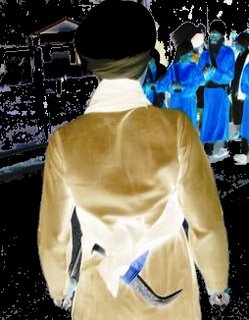
This difference in names is not about inequality. Rather, Guru Ji recognises the difference between men and women. As individuals we are all different from each other, but this difference does not imply inequality. Women and men are different but remain equals. Guru Ji considered women and men to be unique. He respected the genders and, therefore, made the distinction in respectfully.
Sahiba from Sikhsangat.com says: “… Whenever I'm filling in an application or anything, and I put down Kaur, I remember I'm Sri Guru Gobind Singh Ji's Daughter. Like, of course we know it, but I never really pay attention to it.....it's not something that I think about all day long. But when I write Kaur, or say it, I remember it instantly. With Kaur, it is my 10th Guru that always comes to mind. It's a really good feeling-Dhan Dhan Sri Guru Gobind Singh Ji..."
Thus, from the day you are born to the day you die your name remains the same. You do not have to change it due to marriage. Unfortunately, the tradition of using the "Kaur" as a name has all but disappeared amongst Sikh women. It is either dropped, in favour of caste surnames, or misused as a middle name. Guru Ji never designed it as such. Have we not belittled His concepts? Have we lost so much faith and self-esteem that we must copy the bigoted traditions of others?
Sikh women are today demanding equal rights. Rightly so. However, they fail to realise that they themselves create inequality by not considering themselves Guru Ji’s Daughter. They no longer consider themselves as Daughters of the Khalsa. Why should Sikh women feel that they must change their names after marriage? This is not part of the Sikh tradition. It belongs to others. Leave it to them. It has nothing to do with the Sikhism. Waheguru gave us these names.
26th27thDecember from Sikhsangat says: “…well I know I’m a princess, but I don’t tell anyone because I feel that if I tell the other person that my last name is princess it sounds corny or might give a bad impression to the other person about me. The person might think that I’m trying to say that I am rich…”
Real freedom can only be found in Sikhi. Real freedom is the freedom ones feels from within, and not the show of freedom we pretend to have in the outside world and to others. By keeping your unique and beautiful Sikh identity you are maintaining the freedom given to you by Guru Ji. Ultimately, by keep and being content with the "Kaur" you truly understand its importance. Others will make excuses about the difficulty of having such a name. Why make such excuses? The importance of "Kaur" is truly inexpressible. It is something very unique in the history of the world.
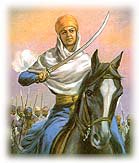 Degha Singh from DiscoverSikhi.Com says: “…Sri Guru Gobind Singh Ji bestowed this name to all Sikh women to distinguish their power and courage...just look at Sikh history with examples such as Mata Bhag Kaur Ji who inspired the Chali Mukte to return to Guru Sahib and fought alongside with them in battle…”
Degha Singh from DiscoverSikhi.Com says: “…Sri Guru Gobind Singh Ji bestowed this name to all Sikh women to distinguish their power and courage...just look at Sikh history with examples such as Mata Bhag Kaur Ji who inspired the Chali Mukte to return to Guru Sahib and fought alongside with them in battle…” The Importance of Kaur:
“…its like a Declaration of Khalsa, a Declaration of Truth...that person identifies themselves with the ideals of Guru Sahib and pronounces that Sri Guru Gobind Singh Ji is their Father and Mata Sahib Kaur Ji their Mother…”

Guru Jis Brave Princess
Hear my roar
I’m a Fierce Lioness
With my Dastaar tied tall
And my kirpan by my side
I stand Proud on the battlefield of life
Keeping my 5 ks
Japping for my Guru
Helps me mend my foolish ways

